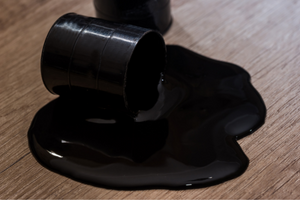Uncontrolled leaks can occur during various operations related to the production, transport or handling of various liquids, such as fuel or acids. How can you control dangerous substances and protect people as well as the environment from contamination? In such cases, invaluable help is available from sets of sorbents – what are they and what are they used for? Here is some useful information.

Sorbent – a definition
What is a sorbent? The Latin word “sorbere” means “to absorb”. Therefore, sorbents are defined as various liquid or solid substances in the form of sleeves, shavings, rolls, granules and mats, which are used for sorption – the removal of substances as a result of:
- adsorption – the surface adhesion of liquid molecules,
- absorption – the complete absorption of the molecules with which they are in contact.
Sorbents are used to block leaks and neutralise the toxic effects of chemicals, greases, paints, fuel oil or solvents.
Sorbents: breakdown
The market offers different types of sorbents, which are intended to be used in the field or indoors. These products are divided by origin and composition into:
- organic sorbents (of plant origin),
- chemical sorbents (produced from polypropylene under laboratory conditions),
- inorganic sorbents (produced from minerals, rocks).
The colour coding of the products facilitates the proper selection of the sorbent. Blue sorbents are used to remove grease stains (for example, crude oil or fuel oil stains). Yellow sleeves and mats allow for controlling chemical leaks. Grey universal sorbent can be used both to remove grease and to eliminate consumable fluids.
Natural and mineral sorbents – examples
What are organic sorbents and what are they made of? Sorbents have been known for centuries as natural absorbers of poisonous and dangerous, liquid and semi-liquid substances. The oldest, cheapest and most well-known sorbents include sawdust and straw, which can be scattered directly on the asphalt, soil or concrete flooring. In recent years, industrialists have also been very interested in soil sorbents and a diatomite-based sorbent (diatomaceous earth), which is excellent at removing crude oil.
Another group of popular absorbents consists of mineral sorbents and mineral and organic sorbents, such as peat, sand, talcum or glass wool. In the market, you can also find ready-to-use, specialist mixtures and granulates based on processed minerals, including sorbent compact (according to the product safety data sheet, it can be used for removing grease stains as well as crude oil or acids).
Industrial chemical sorbents
In industrial plants where there is a high risk of leakage of dangerous substances, universal, professional sorbents are used to remove oil, crude oil, water and chemicals. These are granules, roll-out pads, rolls and sleeves made of mineral and synthetic ingredients. They are distinguished by the simplicity of use, non-flammability and versatility of application.
Sorbents: industrial uses and more
The range of possible uses of sorbents is very wide. Granular sorbents or absorbents in the form of spill absorbent mats or adsorption sleeves can be found, among others, in:
- industrial and production plants,
- warehouses,
- equipment resource facilities,
- research laboratories,
- fire brigade units,
- on merchant ships and oil tankers,
- in treatment plants, waste management plants, sorting stations.
Notably, sorbents are not limited to absorbers of chemicals or oil used under industrial and emergency conditions. They also include high-quality absorption cores, fillers and gel granules used for the production of hygroscopic sachets and intimate hygiene products.
Oil-collecting sorbent – where to buy?
Where can you buy a loose sorbent to collect oil and other dangerous substances? Professional sorption products are best ordered directly from the manufacturer or in a specialised fire protection shop. The product should be certified by the National Institute of Hygiene, which means that it is 100% safe for people and the environment.
- https://archive.epa.gov/emergencies/content/learning/web/html/sorbents.html